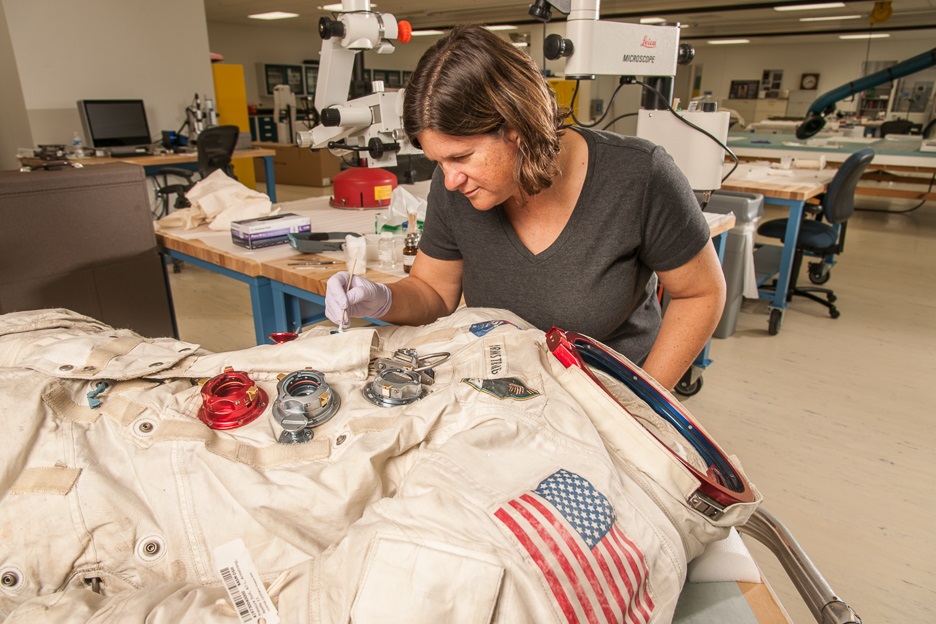Are Acrylics and Other Plastics Decaying?
Everything from space suits to crash test dummies to acrylic paintings by Andy Warhol are showing signs of degradation after as few as two or three decades.
 |
| Yvonne Shashoua with a 1970s-era crash-test dummy that is leaking plasticizer |
Depending on how the plastic was formulated, it might discolor, bleach, form a scaly crust, give off foul-smelling gases, leach out acid or sticky liquids, turn to goo, or become brittle and cracked.
According to the April, 2016 issue of Scientific American magazine, exposure to oxygen or ultraviolet light removes the electrons that bind the larger molecules of plastics together.
 |
| Lisa Young restores Neil Armstrong's spacesuit (source) |
Many plastics are composed of a complex mixture of dyes, stabilizers, surfactants, plasticizers, and antioxidants. Those ingredients can affect how the material behaves over time and what should be done to try to stabilize it. Unfortunately, the actual composition of many plastics are not known because the manufacturers kept them secret.
• PVC (polyvinyl chloride). PVC was used in crash test dummies, which are now weeping fake blood into display cases.
• Polyurethane, an ingredient in panty hose and sponges.
• Polyethylene (HDPE or high-density polyethylene). People who have stored water in old milk jugs may have noticed that they will spontaneously rupture.
• Cellulose nitrate and cellulose acetate. Cellulose was one of the first synthetic polymers, and was used extensively in making motion picture and photography stock. Cellulose is flammable, and it degrades "malignantly," meaning it releases nitric acid and toxic vapors as it breaks down, and the acid can corrode adjacent materials. Conservators have become adept at recognizing chemical changes through telltale smells.
• Acrylic polymers, used by artists such as Andy Warhol, David Hockney, and Mark Rothko since the paints were introduced in the 1940s as a more permanent alternative to oil paints.
• Polyurethane, an ingredient in panty hose and sponges.
• Polyethylene (HDPE or high-density polyethylene). People who have stored water in old milk jugs may have noticed that they will spontaneously rupture.
• Cellulose nitrate and cellulose acetate. Cellulose was one of the first synthetic polymers, and was used extensively in making motion picture and photography stock. Cellulose is flammable, and it degrades "malignantly," meaning it releases nitric acid and toxic vapors as it breaks down, and the acid can corrode adjacent materials. Conservators have become adept at recognizing chemical changes through telltale smells.
• Acrylic polymers, used by artists such as Andy Warhol, David Hockney, and Mark Rothko since the paints were introduced in the 1940s as a more permanent alternative to oil paints.
| Andromeda, 1962, acrylic, by Andrew Liberman suffers from a whitish bloom |
Using water to clean an acrylic painting can be risky as it can make the paint swell and lead to surface losses, according to a conservation scientist for the Tate museum.
[Edit March 24: Please see the comments after this post, where Mark Golden of Golden Acrylics argues that modern acrylics do not suffer any longevity or stability issues.]
http://gurneyjourney.blogspot.com/2016/03/are-acrylics-and-other-plastics-decaying.html